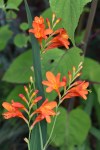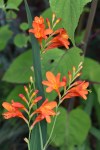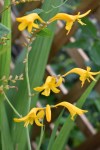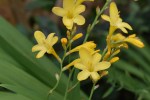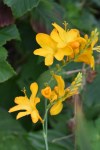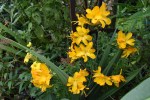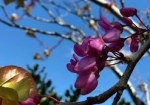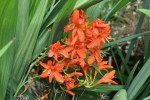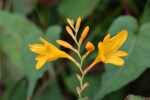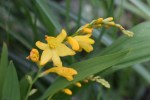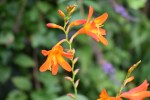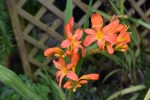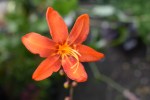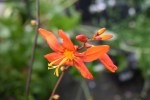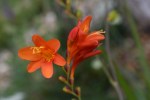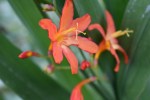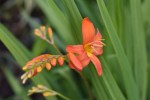My May pages for my garden journal are full of summery gardening. I opened with a page featuring two of my paintings of blue irises, one Iris germanica and the other Iris sibirica. I used Japanese brush pens.
I wrote, “May is the month when spring morphs into summer, a time when we can get warm sunny days and blue skies occasionally interrupted by days with biting cold winds and frosty nights. The garden fills rapidly with boisterous growth with flowers on trees, shrubs and herbaceous plants.
The iris family have the most unusually structured flowers in our garden, with their flags, falls and landing strips for bees.”


In contrast to the bright blues of our iris I looked at euphorbias on the opposite page where I created a montage of photos of closeups of the heads of euphorbias, with their bright greens and yellows of their bracts and flowers. I wrote, “Bracts and flowers work in harmony on our large collection of Euphorbias. The flowers are very much less significant than the bracts that surround them.”

Turn over onto the next double page spread and we consider azaleas and succulents. I wrote on the first page, “We grow very few Azaleas in our gardens apart from a couple of deciduous varieties, ‘Luteum’ and ‘Golden Eagle’. My painting is of ‘Golden Eagle’.


On the page opposite ‘Golden Eagle’ I discussed some work I was doing with succulents and I wrote, “For a few days in May I busied myself sorting out our succulent container gardens, using cuttings from last year plus some new selections. By the end of summer all these containers will be full and each plant will give me new cuttings.”










Onto the next double page we look at more azaleas and thalictrums, with azaleas on the left hand page. I wrote, “I have selected miniature azaleas as the flowering plant of the month for May. A few pages back I shared my watercolour painting of the orange flowered Azalea ‘Golden Eagle’, which is deciduous and scented. In the Japanese Garden we grow a few evergreens as used by Japanese garden designers.”



Pair of A. japonica ‘Ageeth’ A. japonica ‘Spek’s Orange


A. japonica George Hyde


A. japonica ‘Spek’s Orange’
This next page looks at thalictrums, my foliage plant for May. My foliage plant of the month is Thalictrum of which we grow a wide selection. These are herbaceous perennials grown for both their flowers and foliage , but for now the foliage has the largest presence.”






For the final page of May I feature one of my favourite trees, a betula (birch). “Plant of the month for bark and stems is the most beautiful of birches, Betula albosinensis ‘Septentronalis”. It boasts white bark peeling to orange and salmon pink. The sun catches the peeling bark and it becomes fine brittle toffee.”











So when we next visit my garden journal we will be half way through the year – it is going far too quickly!























































